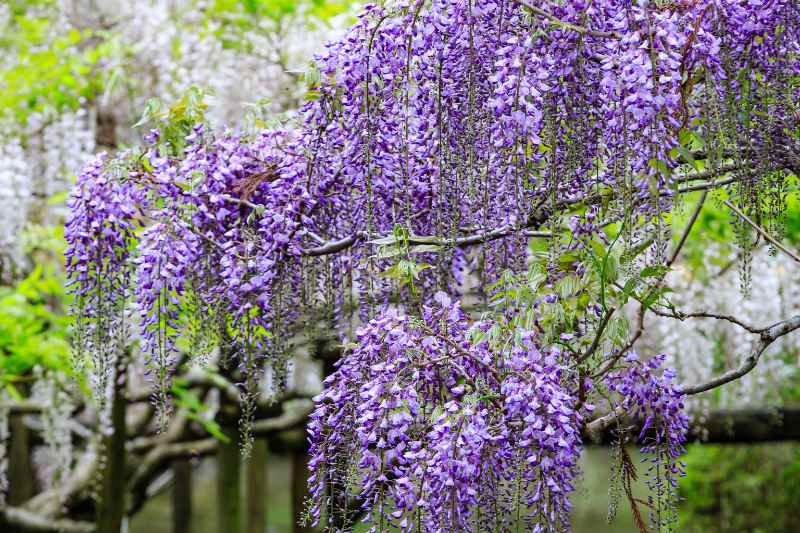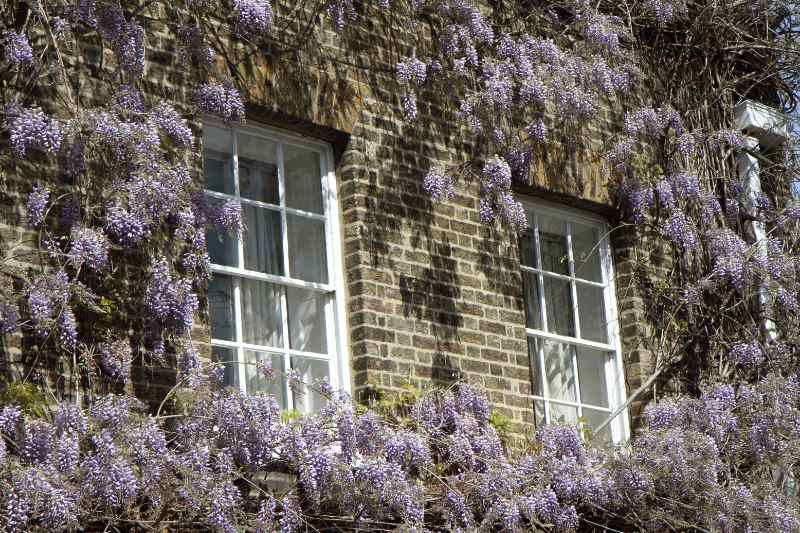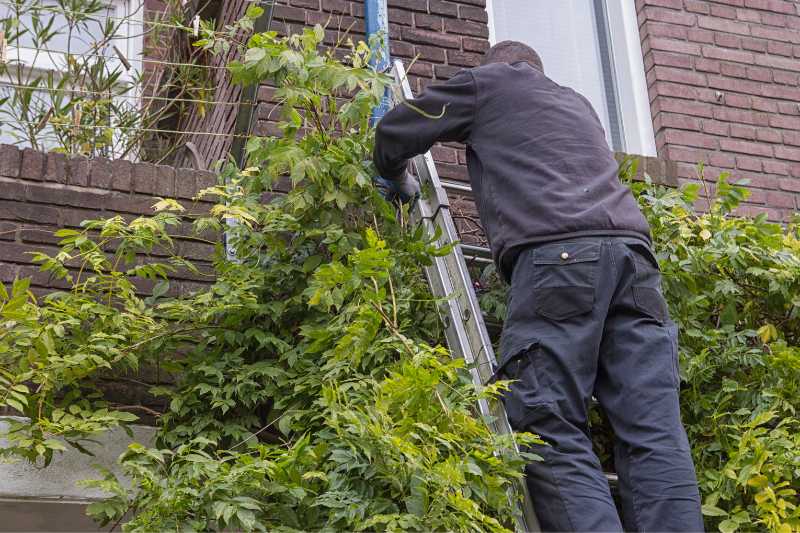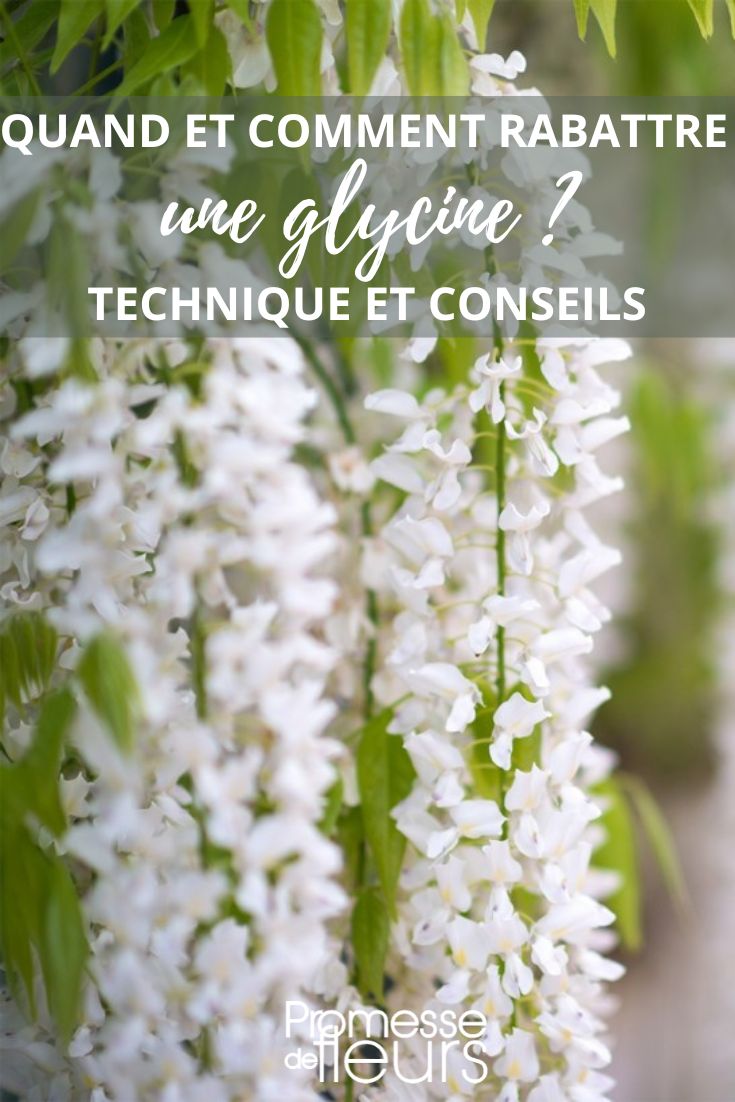Wisteria is an ornamental climbing plant that captivates with its spectacular flowering and enchanting fragrance. But to maintain its beauty and vigour, regular maintenance is essential. One of the questions frequently asked by gardeners concerns the right time and method to prune a wisteria. Are you wondering when to prune your wisteria to encourage abundant flowering or how to prune without damaging the plant? You’re in the right place! Follow our practical tips to ensure beautiful growth and spectacular flowering for your wisteria.

Wisteria: an essential climbing plant
Wisteria is a highly sought-after climbing plant in our gardens for its clusters of fragrant white, blue, or purple flowers and its ease of cultivation. Native to Asia and North America, this ornamental climber adapts well to various types of soil and climate. It is often used to adorn pergolas, trellises, and facades thanks to its dense foliage and cascading floral displays, usually purple or white, which are highly fragrant in spring. Although it is relatively easy to grow, wisteria requires regular pruning to stimulate abundant flowering and control its rapid growth.
Why should you prune a Wisteria?
Pruning a wisteria is an essential step in its maintenance for several reasons. First, pruning stimulates flowering by encouraging the development of new floral buds, making the plant more aesthetic and fragrant.
Next, wisteria is a climbing plant that can quickly become invasive. Pruning allows you to control its spread and maintain a more manageable shape, especially if your garden space is limited.
Regular pruning of wisteria also contributes to its overall health. It helps to aerate the plant and reduce the risk of infestation by pests or diseases. Additionally, by removing dead or weak branches, you encourage the growth of new, more vigorous shoots, rejuvenating the plant and prolonging its lifespan.
Is it essential to prune a Wisteria? To the question of whether pruning a wisteria is essential, it depends on your goals for the plant. If you want a flowering, well-formed, and healthy wisteria, then pruning is highly recommended. Even more so if it is trained as a tree. However, if the plant has enough space to spread and you are less concerned about the quantity of flowers, pruning can be skipped every other year or so.

When to prune a Wisteria?
Pruning mainly occurs at two times of the year:
- Winter or Late Winter Pruning: This pruning ideally takes place between the end of winter and the beginning of spring, before new growth begins. It allows for the removal of dead wood and shortens the stems to encourage abundant flowering.
- Summer or Late Summer Pruning: A second pruning can be carried out at the end of summer, after flowering. This pruning is lighter and aims to control the plant's growth by removing unnecessary or cumbersome shoots.
How to prune a Wisteria?
Pruning or trimming a wisteria requires a certain technique to ensure the health of the plant and promote abundant flowering. Here’s how to proceed effectively:
- Assess the plant: before starting, take a moment to assess the structure of your wisteria. Identify dead, diseased, or weak branches, as well as shoots extending in undesirable directions.
- Remove dead or diseased wood: start by removing any dead, diseased, or weak branches. These branches can be cut back to the base.
- Reduce lateral shoots: lateral shoots should be shortened, leaving only a few buds on each branch. This encourages the development of new floral buds.
- Control height and shape: cut back the main stems to control the height and shape of the wisteria. Try to maintain a balanced shape that suits the space in which the plant is located.
- Clean cuts: Always make clean, angled cuts to prevent water from pooling, which could encourage disease development.
Always remember to use sharp and clean tools to minimise the risk of spreading diseases!

Necessary Equipment
- Sharp and clean pruning shears
- Pruning saw or branch cutter for larger sections
- Gardening gloves
- Ladder or step stool
































Comments